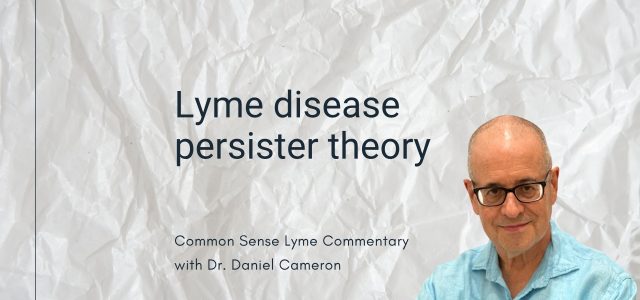
A recent study published in Nature Microbiology has revealed how malaria parasites survive in the human body for years without causing symptoms—offering powerful insights into the Lyme disease persister theory.
Researchers from Weill Cornell Medicine, including Dr. Kirk Deitsch, found that Plasmodium falciparum—the parasite responsible for malaria—can evade the immune system by silencing its var gene family. This gene family normally produces sticky surface proteins that mark infected red blood cells for immune attack. Without them, the parasite effectively goes invisible.
Read the study in Nature Microbiology
So what does this have to do with Lyme disease?
More than you might think.
Lyme Disease and the Lyme disease Persister Hypothesis
In my practice, I’ve seen patients return months or even years after Lyme disease treatment—still battling fatigue, brain fog, joint pain, or autonomic dysfunction. Sometimes they relapse after initial improvement. Other times, they never fully recover.
Their symptoms are real—but their tests are negative.
This is where the Lyme disease persister theory enters the conversation.
Like malaria, the bacterium that causes Lyme disease—Borrelia burgdorferi—may survive in a dormant or immune-evasive state, undetectable by standard tests and unresponsive to typical antibiotic courses.
How Borrelia May Evade Detection
Just as P. falciparum silences genes to hide, Borrelia has its own tricks:
-
Switching surface proteins (e.g., via VlsE antigenic variation)
-
Entering low-metabolic or dormant states
-
Sequestering in poorly surveilled tissues like joints, brain, or nerve roots
These adaptations may allow it to persist quietly, despite treatment.
In the malaria study, Dr. Deitsch compared the parasite’s behavior to a criminal who runs out of disguises—and then throws on an invisibility cloak.
The immune system can’t find it.
But it’s still there.
When “Invisible” Doesn’t Mean “Gone”
In Lyme disease, we often lack a reliable biomarker for ongoing infection. But patients continue to report symptoms—relapsing, remitting, debilitating.
This isn’t just “post-treatment fallout.” In some cases, it may reflect a persistent, silent infection.
-
Standard testing may not detect low-level Borrelia
-
Symptoms often return in predictable cycles
-
Tissues may harbor Borrelia long after blood is clear
It’s not that patients aren’t still sick. It’s that we haven’t yet built the right tools to detect what’s left behind.
Why This Matters for Lyme Disease Research
This malaria research challenges long-held assumptions. It shows us that pathogens can evolve to hide, and that modern medicine must innovate to catch them.
For chronic Lyme disease and suspected persistent infection, this has major implications:
-
Symptoms should not be dismissed solely because a test is negative
-
Diagnostic innovation—such as single-cell analysis—is needed
-
Treatment may require longer or combination antibiotic courses
We need to move beyond rigid definitions of “cure” and instead focus on how infections behave over time.
Clinical Curiosity Over Assumptions
If we accept that malaria parasites can remain undetectable for decades…
Why is it so hard to believe that Borrelia burgdorferi might do the same?
Lyme disease may not behave exactly like malaria. But when patients present with chronic, unexplained, relapsing symptoms—we owe them the same scientific curiosity that uncovered silent malaria infections.
Sometimes, the infection isn’t over.
It’s just gone quiet.
Citations & Related Reading
📚 Wang J, Zou Z, Park H, et al. Plasmodium falciparum maintains long-term asymptomatic infection by silencing var gene expression. Nat Microbiol. 2025. https://doi.org/10.1038/s41564-025-01631-8
🔗 Dr. Cameron’s blog on Lyme persisters
🔗 Three-Antibiotic Cocktail Clears Persister Lyme Bacteria in Mouse Study



Thank you for this insight. I hope more research can be done. Currently undergoing doxy treatment for a suspected infection (possible chronic undiagnosed for some time) and intensified symptoms on day four, especially headaches. Waiting on labs but also know they aren’t reliable.